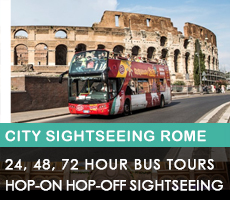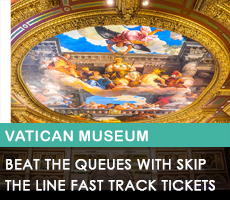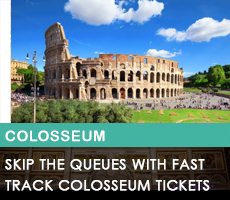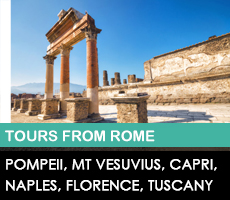The best churches and temples in Rome to visit?
Guide to some of the best churches and basilicas including the four major churches
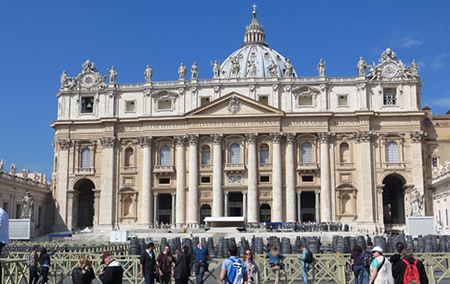
The best churches and temples in Rome are always going to be a very personal choice. This brief guide is aimed at the first time generalist visitor to Rome who is not a pilgrim, not religious, nor has a keen interest in religion.
One thing for sure, for impressive churches you have come to the right place. Almost around every corner there is a church of some kind that anywhere else would be a major attraction, often it is just another church largely unmentioned in the guidebooks.
What strikes most people is the sheer opulence of the treasures within each church. Scrape the surface and there are stories too, whether it be relics, martyrs or miracles.
Access and restrictions in Rome churches & temples
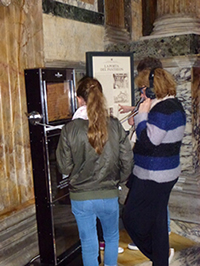
With a few exceptions most churches and temples are free to enter, even the blockbuster churches and temples like St Peter's, the Pantheon and San Giovanni in Laterano.
There are normally audio or video guides available, often a small bookshop. It is worth investing in a good guide book, even the global branded guides like Lonely Planet and Eye Witness have worthwhile sections on what to see and look out for in most churches and temples.
A few of the smaller churches will have their prize exhibits in darkness and you have to put a few coins in to turn the light on that illuminates the treasure.
The smaller churches may close for a period around midday and early/mid afternoon. All are working churches, not museum pieces and all may close to tourists or have restricted access for mass, funerals and weddings.
All churches and temples will have signs about wearing appropriate dress, many will have no photography or mobile phones.
Four major Basilicas of Rome
You may sometimes see reference to the “Four Major Basilicas of Rome” and as a general tourist may think that these four should form the core religious locations to visit in Rome.
The Papal Basilicas as they are sometimes known are very important to the Catholic church with feast days, and each have a special “holy door” opened only during Jubilee years.
St Peter's
Whilst they can be very important if you are Catholic, for the average tourist St Peter's Basilica at the Vatican is going to be the only “must see" for any first time visitor to Rome of these. If you only could visit one church in Rome, this is probably the one to go for. The sheer scale and size will leave a lasting impression.
Saint John, Saint Mary Major and Saint Paul’s Outside the Walls
The other Papal Basilicas are Saint John Lateran (Basilica di San Giovanni), Saint Mary Major (Basilica di Santa Maria Maggiore) and Saint Paul’s Outside the Walls.
For the average tourist Basilica di San Giovanni and Basilica di Santa Maria Maggiore are worthwhile if you are staying more than two days in Rome and are both listed below.
Visiting St Peter's Basilica and the Pantheon in Rome
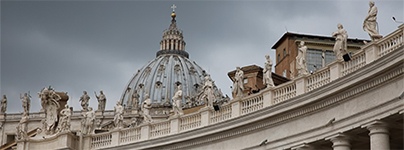
St Peter's Basilica
For the first time visitor St Peter's Basilica will probably be on your itinerary even if you are on a day tour of Rome.
We have a dedicated page to St Peter's Basilica within our Vatican section.
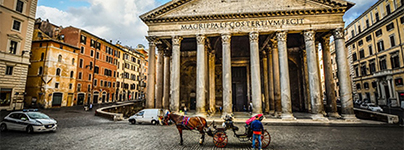
The Pantheon
Like St Peter's the Pantheon will be high up there on the “must see” list. It won't be a very long visit but it is worthwhile. It is an ideal place to visit early evening perhaps wandering over to the other nearby “must see” the Trevi Fountain and finding your own restaurant for dinner along the way.
Basilica San Giovanni
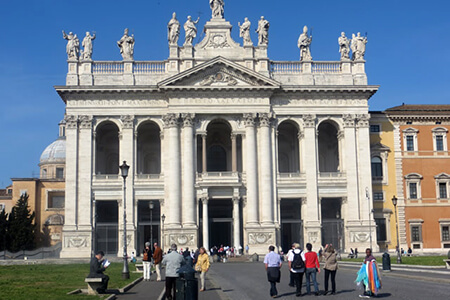
One of the four Papal Basilicas mentioned above just to the south of the centre with a handy Metro stop close by. Basilica di San Giovanni is the cathedral church of Rome and the official seat of the Bishop of Rome, who is the Pope. As such the Basilica contains the papal throne, although the pope rarely visits and lives over at the Vatican.
If you have three or more days in Rome it is well worth a visit, especially for the layperson if you combine it with the Santuario della Scala Santa (Palace of the Holy Steps) on the other side of the road.
Santuario della Scala Santa (Palace of the Holy Steps)
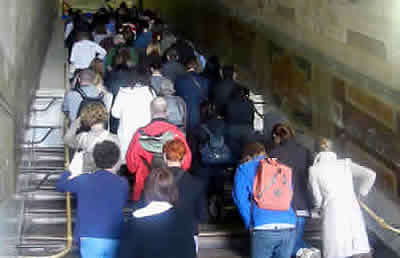
On the other side of the road from Basilica di San Giovanni is an experience you will be sure to remember from your visit to Rome.
The Scala Santa church by Rome standards is a rather small obscure church from outside.
The “Holy Staircase” starts as soon as you walk through the front door and consists of 28 steps of Tyrian marble that legend holds were the actual staircase of Pilate's house, which Jesus descended after being condemned.
According to tradition, Constantine's mother, Helen, brought the steps from Jerusalem to Rome in 326, and they've been in this location since 1589. Today pilgrims from the world over come to climb the steps on their knees.
You cannot ascend the steps on foot, instead you have to go on your knees and climb the steps on your knees to the alter at the top.
Most of the time you are far from alone (see image) and it will take a good chunk of time to go from bottom to top as everyone who makes the climb wants to make a prayer when at the top.
(There is another flight of steps running parallel to the holy steps that you can just walk up.)
Entrance is free, but donations are very gratefully received. The church is open from real early to midday and then again from 3.30pm to 6.30pm.
Basilica di Santa Maria Maggiore and San Luigi dei Francesi
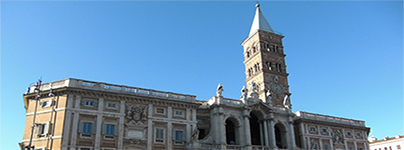
Basilica di Santa Maria Maggiore
Just a short five minute walk from Termini Station on the hill of Esquiline, and another of the Papal Basilicas.
The mosaics are the most famed feature of Basilica di Santa Maria Maggiore.
Legend has it that on August 5th, AD356 snow fell on this spot in the middle of a hot Rome summer. Pope Liberus had a dream that told him to build a church on the spot where the snow fell and so he naturally obeyed. Every year thousands of petals are dropped from the roof to commemorate.
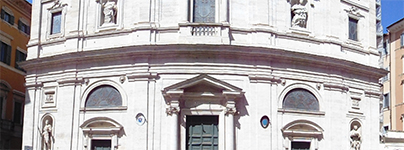
San Luigi dei Francesi
Just a short five minute walk from Piazza Navona or the Pantheon, the French National Church is home to three works of St Matthew, by the artist Caravaggio, a late Renaissance master whose work is featured at the Galleria Borghese.
When you enter, no doubt you will see a small crowd at the last chapel on your left where the paintings are displayed in darkness. Someone (perhaps yourself?) eventually puts a coin in the slot that illuminates the paintings for a few minutes.
Note this church is closed at lunch times and can be closed to visitors at other times more than most.
Saint Cecilia in Trastevere
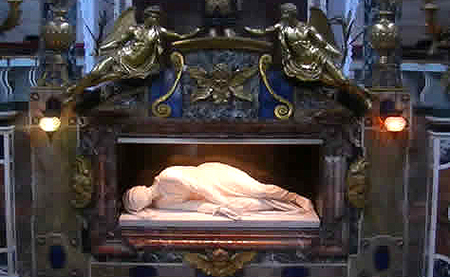
Saint Cecilia patron saint of music was martyred here in AD230. After an attempt at scalding her to death she was beheaded.
The church was built on the site of her house. (You can still visit remains of the house beneath the church.)
The church features a 13th-century fresco by Pietro Cavallini in the nuns choir, the door is to the left of the church as you enter.
Inside the church itself, below the altar, Stefano Moderno's sculpture is a rendition of exactly how Saint Cecilia's miraculously preserved body was apparently found when it was unearthed in the Catacombs of San Callisto in 1599.
Again, a smaller church closed for lunch and viewing of the fresco only mid to late morning.
The church is at the southern end of Trastevere way from the centre and main restaurant area most tourists visit. With no easy access by public transport you really need a street map of some kind from the Viale de Trastevere where the buses and trams drop you off at Trastevere. It is then a 5/10 minute walk in an area where it is almost a pleasure to get lost.




